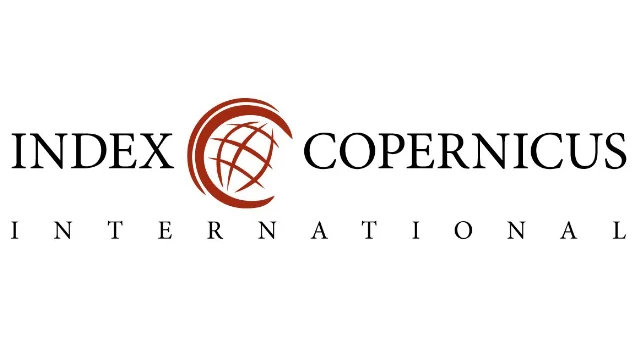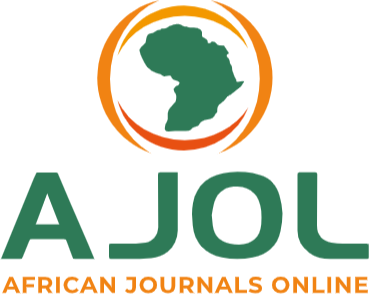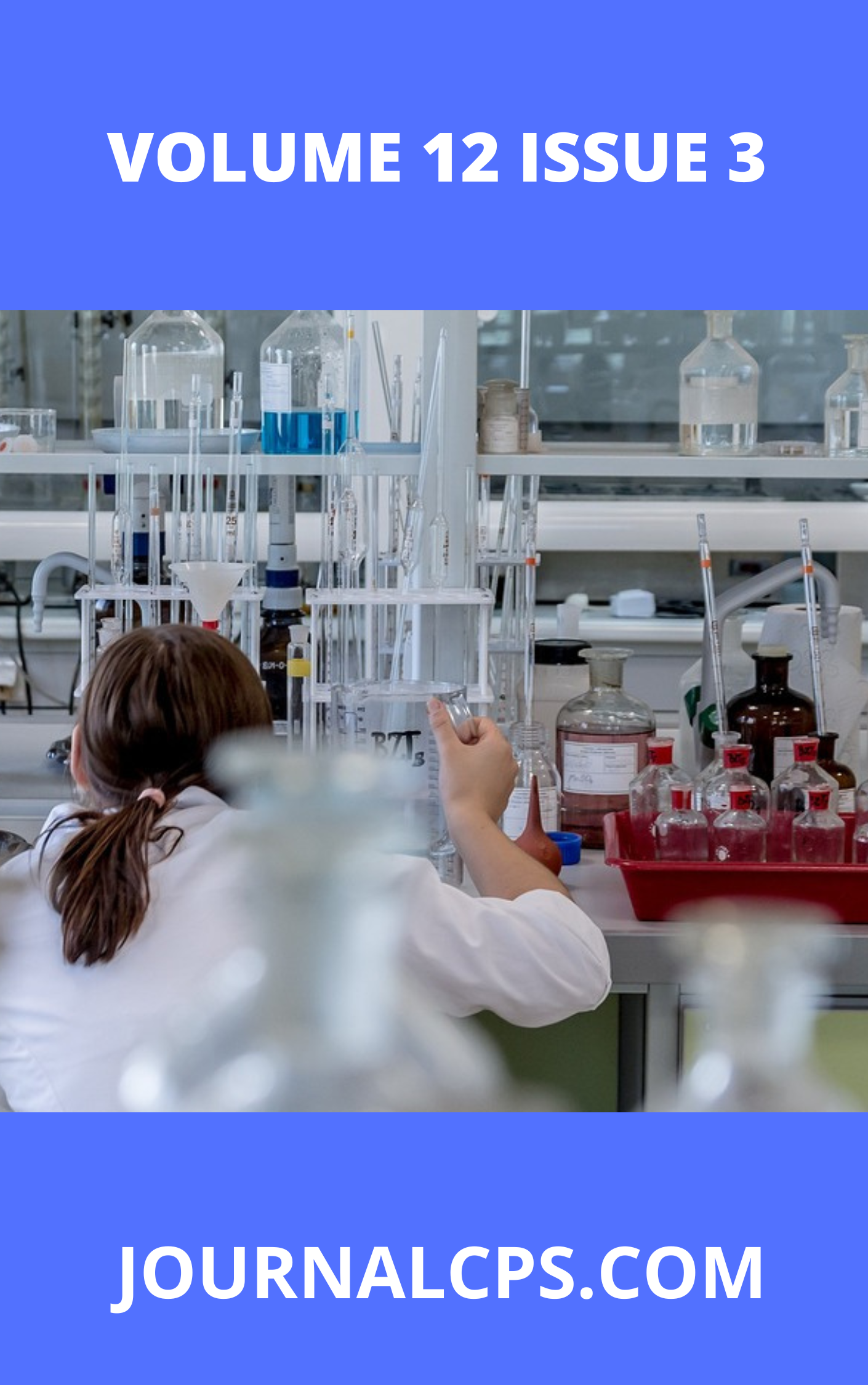Chemical Profiling, Antioxidant and Antimicrobial Activity of Cinnamomum Tamala (Indian Bay Leaf) Extract
Keywords:
Cinnamomum tamala, 2, 2-diphenyl-2-picryl hydrazyl, benzoic acid, gas chromatography-mass spectrometryAbstract
Nearly 80% of the world’s population still relies on traditional medicines for primary health care, most of which involve the use of plant extracts which mostly contain bioactive compounds. The chemical composition and antioxidant activity of the ethanol leaf extract of Cinnamomum tamala were investigated using Gas Chromatography-Mass Spectrometry (GC-MS) and 2,2-diphenyl-2-picryl hydrazyl (DPPH)free radical scavenging and ferric reducing ability of plasma model (FRAP) respectively. Crude extract of C. tamala (bay leaf) was also investigated for it antimicrobial properties using the well in agar diffusion method. The results obtained from GC-MS analysis indicated that 35 compounds are present in the leaf extract. The most abundant compounds identified for their % peak areas were benzoic acid (55.8%), benzyl benzoate (27.7%), 2,2, 3.3,6,6,7,7 octahydrobenzaldehyde (2.02%), , n- hexadecanoic acid (1.62%), 2,6- dimethoxy-4-(-2- propenyl) phenol (1.13%), diethyl phthalate (1.11%) (-) – spathulenol (1.02%). The result of the antioxidant activity of the crude extract of bay leaf revealed a dose-dependent scavenging of DPPH as well as the ability of the extract to reduce FeCl3 solution. On comparing the results obtained in this study with vitamin C whichwas used as positive control, it was observed that C. tamala possessed significant antioxidant ability which may be attributed to the presence of oxygenated and polyphenolic compounds in the extract. The susceptibility of these isolates towards the leaf extract was compared with gentamycin and nystatin, which were used as a positive control for bacteria and fungi respectively. Results obtained showed that the extract was able to inhibit the growth of the isolates at various concentrations. However, no antimicrobial activity was recorded for Salmonella sp. and Escherichia coli at different concentrations, indicating that they were resistant to C. tamala extract. On comparing the zones of inhibition of the extracts with that of the standard (Gentamycin and nystatin) for bacteria and fungi respectively, the results showed that the zone of inhibition of the standard for all the tested isolates was greater than that of the extracts.
Downloads
Published
Issue
Section
Similar Articles
- O.V. Ikpeazu, Ifeanyi E.Otuokere, K.K.Igwe, Gas Chromatography–Mass Spectrometric Analysis of Bioactive Compounds Present in Ethanol Extract of Combretum hispidum (Laws) (Combretaceae) Root , Communication In Physical Sciences: Vol. 5 No. 3 (2020): VOLUME 5 ISSUE 3
- Salihu Takuma, Siaka Abdulfatai Adabara, Kamal Suleiman Kabo, Gas Chromatography-Mass Spectrometry (GC-MS) Analysis of Some Plants Extract , Communication In Physical Sciences: Vol. 12 No. 2 (2025): VOLUME 12 ISSUE 2
- Edet O. Odokwo, Ngozi M. Uzoekwe, Gas Chromatography-Mass Spectrometry Vernonia Hymenolepis Analysis of the Solvent-Solvent Extract of Vernonia Hymenolepis Leaves , Communication In Physical Sciences: Vol. 8 No. 4 (2022): VOLUME 8 ISSUE 4
- Godwin Enin, GC-MS Profiling of Bioactive Compounds in Methanol Extracts of Spices Used in Ibibio Postpartum Healthcare , Communication In Physical Sciences: Vol. 12 No. 4 (2025): VOLUME1 2 ISSUE 4
- Dr Fatai Afolabi, Mr Ismaila Jide Olawale, Professor Sunday 0. 0ladoye, Physicochemical, Phytochemical and Gas Chromatography- Mass Spectrometric Analyses of Gmelina Arborea Root Hexane Extract , Communication In Physical Sciences: Vol. 12 No. 6 (2025): Volume 12 ISSUE 6
- Ufuoma Shalom Onoabedje, Christopher Obodike Ezugwu, Efeturi Abraham Onoabedje, Antimicrobial Properties of 9, 12-Octadecadienoic Acid Isolated from Leaf Extracts of Acalypha Fimbriata (Euphorbiaceae) , Communication In Physical Sciences: Vol. 12 No. 3 (2025): VOLUME 12 ISSUE 3
- Christopher Ejeomo, Ufuomaefe Oghoje, Composition and Distribution of Polynuclear Aromatic Hydrocarbons Contamination in Surficial Coastal Sediments from Odidi Area of Delta State, Nigeria , Communication In Physical Sciences: Vol. 11 No. 4 (2024): VOLUME 11 ISSUE 4
- Akens Hamilton-Amachree , Ngozi M. Uzoekwe, Phytoconstitution and Antimicrobial Activity of Costus Lucanusianus Floral Volatile Extract , Communication In Physical Sciences: Vol. 9 No. 1 (2023): VOLUME 9 ISSUE 1
- Christopher Ejeomo, Ufuomaefe Oghoje, Composition and Distribution of Polynuclear Aromatic Hydrocarbons Contamination in Surficial Coastal Sediments from Odidi Area of Delta State, Nigeria , Communication In Physical Sciences: Vol. 11 No. 4 (2024): VOLUME 11 ISSUE 4
- Taye Temitope Alawode, Identification of Potential Aedes aegypti Juvenile Hormone Inhibitors from Methanol Extract of Leaves of Solanum erianthum: An In Silico Approach , Communication In Physical Sciences: Vol. 11 No. 4 (2024): VOLUME 11 ISSUE 4
You may also start an advanced similarity search for this article.




